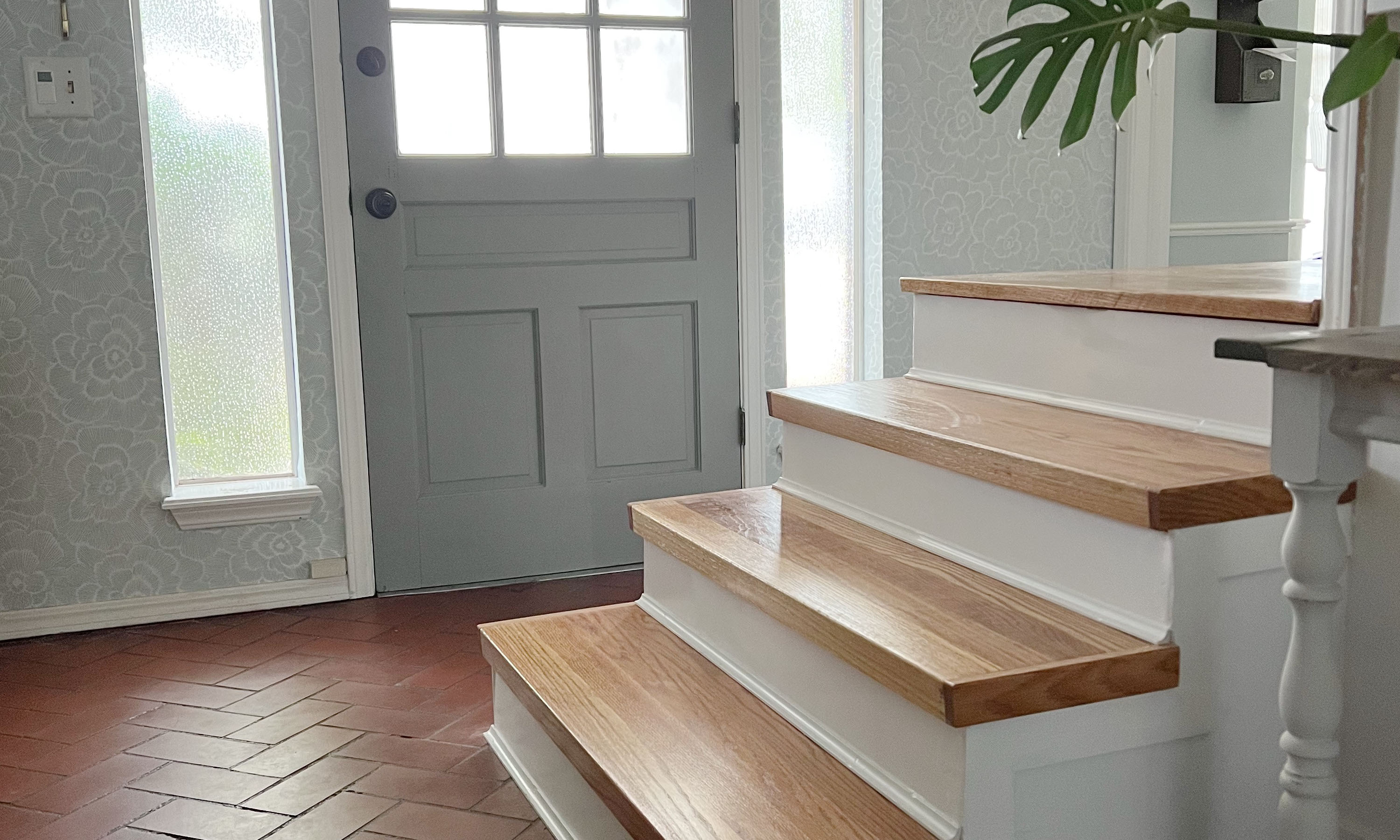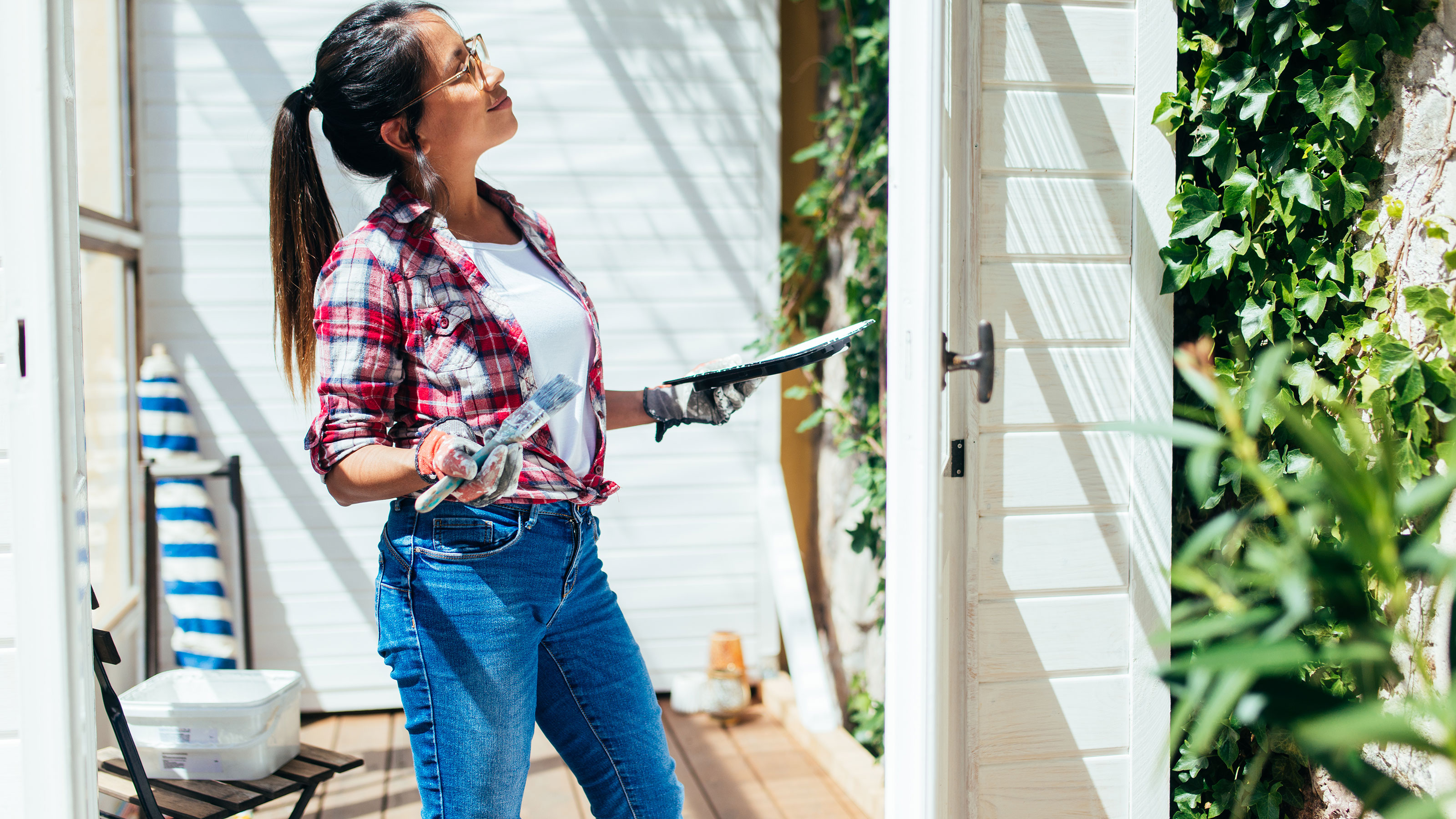

You’re finally ready to finish the basement, expand the kitchen, or add an in-law suite to your home. How exciting! But, the number of decisions involved in a home renovation can be mind-boggling. Especially when it comes to choosing materials. You want materials right for the job but also healthy options for both your family and the earth.
When shopping for materials with a low environmental impact, look for these things:
- The material maximizes the use of recycled materials.
- The material is biodegradable.
- The harvest, mining, or extracting of the raw materials needed to create this material doesn’t threaten the availability of it or other resources, especially endangered species.
- It has a long lifespan.
- The amount of energy required to grow, extract, manufacture, and transport the material, known as the embodied energy is low, with little waste.
- It’s available locally.
Of course, you won’t be able to find all of these attributes in every product you choose. But, it helps to know what to look for and assess the viability of the material for your project.
This list will help you choose eco-friendly building materials that are right for your project.
Bamboo
The perennial, woody grass bamboo grows faster than you can blink. Seriously, bamboo holds the world record for the fastest growing plant with a rate of 36-inches a day, or one inch every 40 minutes. And, because of its ability to regenerate so rapidly, compared to 15-35 years for a pine tree to grow large enough to harvest as lumber, bamboo is used for many wood and paper products. You’ll see bamboo used mainly in flooring and carpet. Things to consider about bamboo:
- It’s renewable
- It’s biodegradable
- Grown in tropical, subtropical, and temperate zones, including the U.S.
Recycled steel
According to the American Institute of Steel Construction, structural steel produced in the United States is made from 93 percent recycled material. And, after the end of a building’s life, 98 percent of its steel is recycled into new steel. While producing steel does require a lot of energy compared with lumber, 81 percent of all steel products in the U.S. are recycled. That makes steel:
- Renewable
- Recyclable
- Has a long life span
- Made in the United States. No need to buy foreign-made steel.
Sheep's wool
When you mention home insulation, most people picture rolls of pink fiberglass batting. But according to TheGreenAge, a UK energy-saving advice portal, sheep’s wool insulation requires 15 percent less energy to produce than fiberglass. And, this all-natural alternative to other types of insulation has an R-value of 3.6-3.8 per inch of product. When you compare sheep’s wool with other options, you’ll find that:
- Sheep’s wool is 100 percent renewable
- It’s recyclable
- Requires less energy to produce
- Grows all over the world
- Harvesting wool doesn’t harm the sheep or damage the environment.
Upcycled/recycled materials
Since the very first Earth Day in 1970, and the inception of the Environmental Protection Agency that same year, the slogan Reduce, Reuse, Recycle has been the motto of millions of Americans. We separate our trash, use fabric grocery sacks, and wash out our zip-shut baggies. Why can’t we apply the same zeal to our building products?
Besides recycled steel and wool, other building products incorporate recycling into their manufacturing process. Composite wood decking is a mixture of recycled plastic film, like grocery bags, and wood. When shopping for new building materials, look at the product’s labeling to determine if it contains recycled elements.
The real beauty of reusing building materials comes when upcycling old materials like architectural elements, slate shingles, hardwood flooring, and wood siding. You can even repurpose items like furniture and old barn wood to create new design elements like:
- Using an antique marble top dresser as a bathroom vanity
- Creating a shiplap accent wall with old barn wood
- Building a fireplace mantle from a barn beam
- Laying a hearth with antique brick
To find items to upcycle into your next remodel project, search for architectural salvage yards like Black Dog Salvage, the inventory showroom of DIY Network’s famed Salvage Dawgs television show. These places feature items from demolition projects, everything from reclaimed wood and window frames to staircases and lighting fixtures. Other places to find re-usable building supplies include:
- Flea markets and yard sales
- Facebook groups and Facebook Marketplace
- eBay or Etsy
- A Habitat for Humanity ReStore
Building materials to avoid
When looking for building materials to avoid, it’s best not to write off an entire category. For instance, traditional vinyl flooring is made from synthetic materials like fiberglass and Polyvinyl chloride (PVC), materials you may want to avoid inside your home. However, environmentally conscious engineers have designed vinyl flooring of all-natural materials like linseed oil, tree rosin, and jute. One such brand of eco-friendly vinyl flooring is Marmoleum.
So, rather than list categories of products to avoid, let’s look at a few of the base materials used to make our home furnishings and building supplies you may want to eliminate from your home.
Volatile Organic Compounds (VOCs)
VOCs are emitted as gasses from certain compounds used in the manufacture of some building materials, like paint, varnish, adhesives, carpet, and particleboard. Some VOCs, like formaldehyde, can cause both short-term and long-term health problems. According to the United States Environmental Protection Association, the effects of exposure to VOCs in the home range from eye, nose, and throat irritation to liver, kidney, and central nervous system damage to cancer.
Fortunately, federal regulations have led to the creation of many VOC-free products, like Mohawk’s Air.o carpet, Benjamin Moore’s ben interior paint, and Georgia Pacific’s Plytanium plywood. So, to reduce exposure to VOCs, look for products labeled VOC-free.
Unsustainably sourced wood
If you have your heart set on wood, that’s great. It’s renewable, biodegradable, and has a low embodied energy rating. And, a lot of wood products are made from recycled wood. However, some wood options come from poorly managed situations. Deforestation causes soil erosion, loss of habitats, and increased greenhouse gases. Sustainably managed forest owners grow, harvest, and process the lumber without disturbing the landscape or local ecosystem. Look for products certified by the Forest Stewardship Council (FSC). An FSC logo on the tag assures you the manufacturer adheres to the nonprofit’s fair labor and sustainable practice standards.
Also, some composite wood products contain harmful chemicals which will outgas into your home. When shopping for wood materials, verify the following:
- The wood comes from a sustainably managed forest or a plantation with species having a life cycle of less than 10 years.
- The wood is recycled.
- Plywood, particle board, or OSB is phenol bonded, not urea bonded.
- Choose wood from a local source rather than an exotic hardwood.
Non-recycled metal
Aluminum sheeting and copper have some of the highest embodied energy ratings, according to a 2013 article in “YourHome, Australia’s guide to environmentally sustainable homes”. And, according to the building supply database for architects, Architizer, the manufacture of non-recycled aluminum, steel, and stainless steel produce the highest amounts of carbon dioxide among other building material options. Always check with the manufacturer or the labeling of a product to ascertain whether the metals used in their products are recycled.
- Keep reading: House renovation costs - how much does it cost to remodel a house?
Certifications to look for on your building materials and home goods
- FloorScore® certification assures your hard surface flooring, underlayments, and adhesives adhere to stringent safe indoor air quality standards. Products carrying this seal of approve have been independently tested by SCS Global Services.
- Sustainable Forestry Initiative is a nonprofit that works with the forestry sector to advance sustainability through global collaborative efforts. Displaying the SFI logo means the wood or fiber product meets their requirements of sustainability.
- The NAHB Research Center Green Certified logo gives third-party evidence that the product adheres to specific green practices and is suitable for inclusion in certified green structures.
- Greenguard Certification assures products carrying their label meet strict chemical emissions standards.
- The Green Seal on a paint, coating, or adhesive tells you it has low VOC content.
Join our newsletter
Get small space home decor ideas, celeb inspiration, DIY tips and more, straight to your inbox!
Carol J. Alexander writes website copy, blog posts, and feature articles on home remodeling and construction topics from her home in the Shenandoah Valley of Virginia. In addition to Real Homes, notable clients include, This Old House, Family Handyman, and Florida Roofing magazine.
-
 My first apartment makeover: 5 renovation mistakes I learned the hard way, and how you can avoid them
My first apartment makeover: 5 renovation mistakes I learned the hard way, and how you can avoid themThese are 5 things to avoid in your apartment makeover. Trust me, I learned these the hard way during my first renovation project
By Luisa Rossi
-
 Share your small space glow up to win $150 in the Real Homes competition
Share your small space glow up to win $150 in the Real Homes competitionShow off your creativity and DIY skills to win $150 and for the chance to be featured exclusively in Real Homes magazine
By Camille Dubuis-Welch
-
 My DIY range hood and backsplash build gave my kitchen the perfect farmhouse finish
My DIY range hood and backsplash build gave my kitchen the perfect farmhouse finishI craved charm in my kitchen space and adding a custom range hood and shelving was the best move.
By Brooke Waite
-
 How to convert carpeted stairs to wood treads: a 5-step DIY
How to convert carpeted stairs to wood treads: a 5-step DIYConvert old worn-out carpeted stairs to wood treads DIY for a beautiful finish that will last for years to come. Plus, this stair riser project will cost a fraction of the price to pay a pro!
By Dori Turner
-
 AC not working? Here are 8 things to check ASAP according to industry experts
AC not working? Here are 8 things to check ASAP according to industry expertsYour AC may not be working because the filter is clogged or you've got a tripped circuit breaker. Whatever the issue, getting to the root of the problem will lead to quicker solutions
By Camille Dubuis-Welch
-
 3 DIYs you should NOT do in a heatwave
3 DIYs you should NOT do in a heatwaveYou shouldn't clean windows on a hot day, you just shouldn't
By Camille Dubuis-Welch
-
 HGTV home renovator shares the most essential home repair you can do
HGTV home renovator shares the most essential home repair you can doHGTV's hottest renovator Carmine Sabatella debunks why this basic home maintenance job should not be forgotten
By Camille Dubuis-Welch
-
 15 telltale signs you're dealing with a cowboy builder and how to avoid them
15 telltale signs you're dealing with a cowboy builder and how to avoid themA cowboy builder is easy to spot, when you know the telltale signs. Here's how to avoid one so you don't end up out of pocket with a poor or even unfinished home reno job
By Lucy Searle